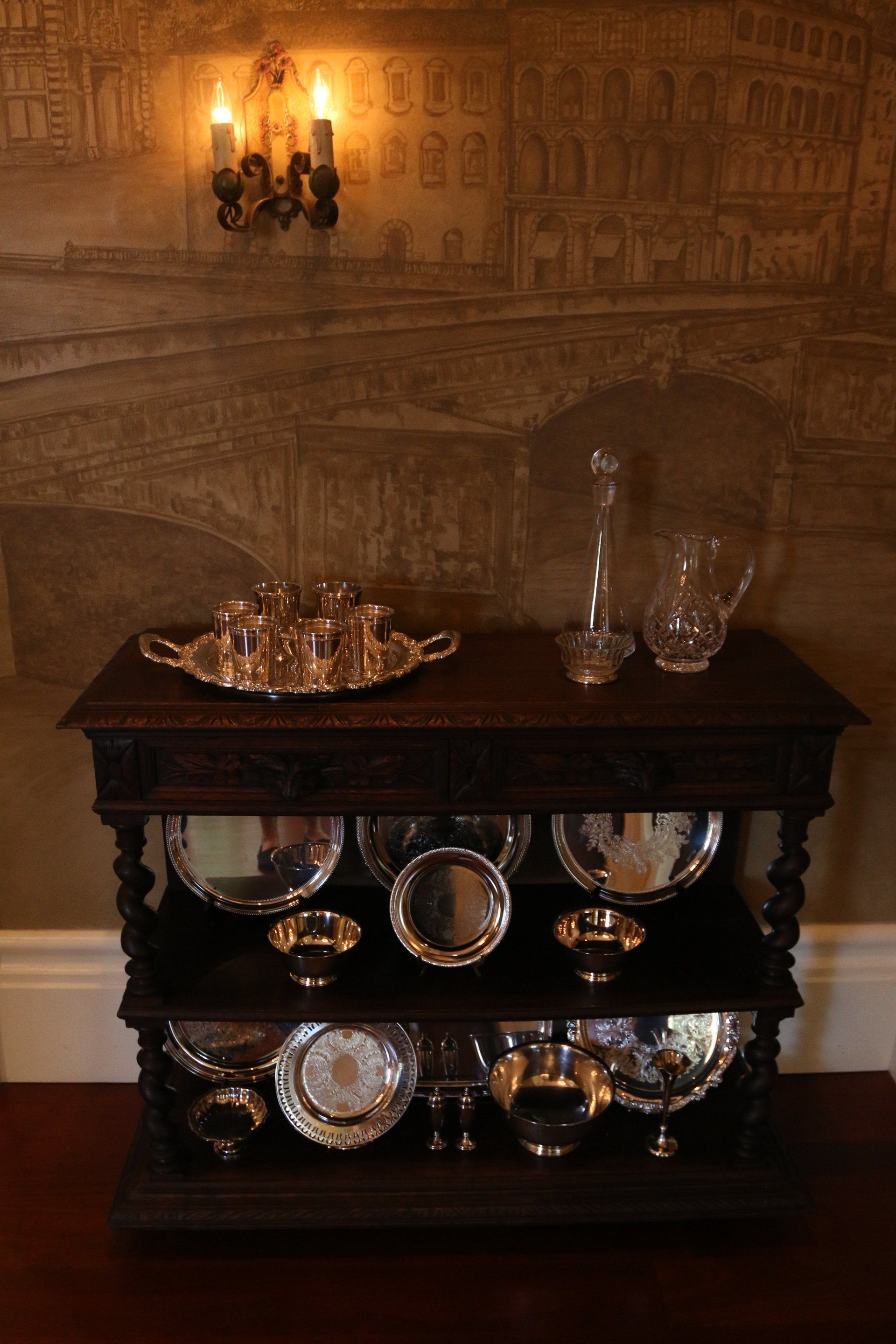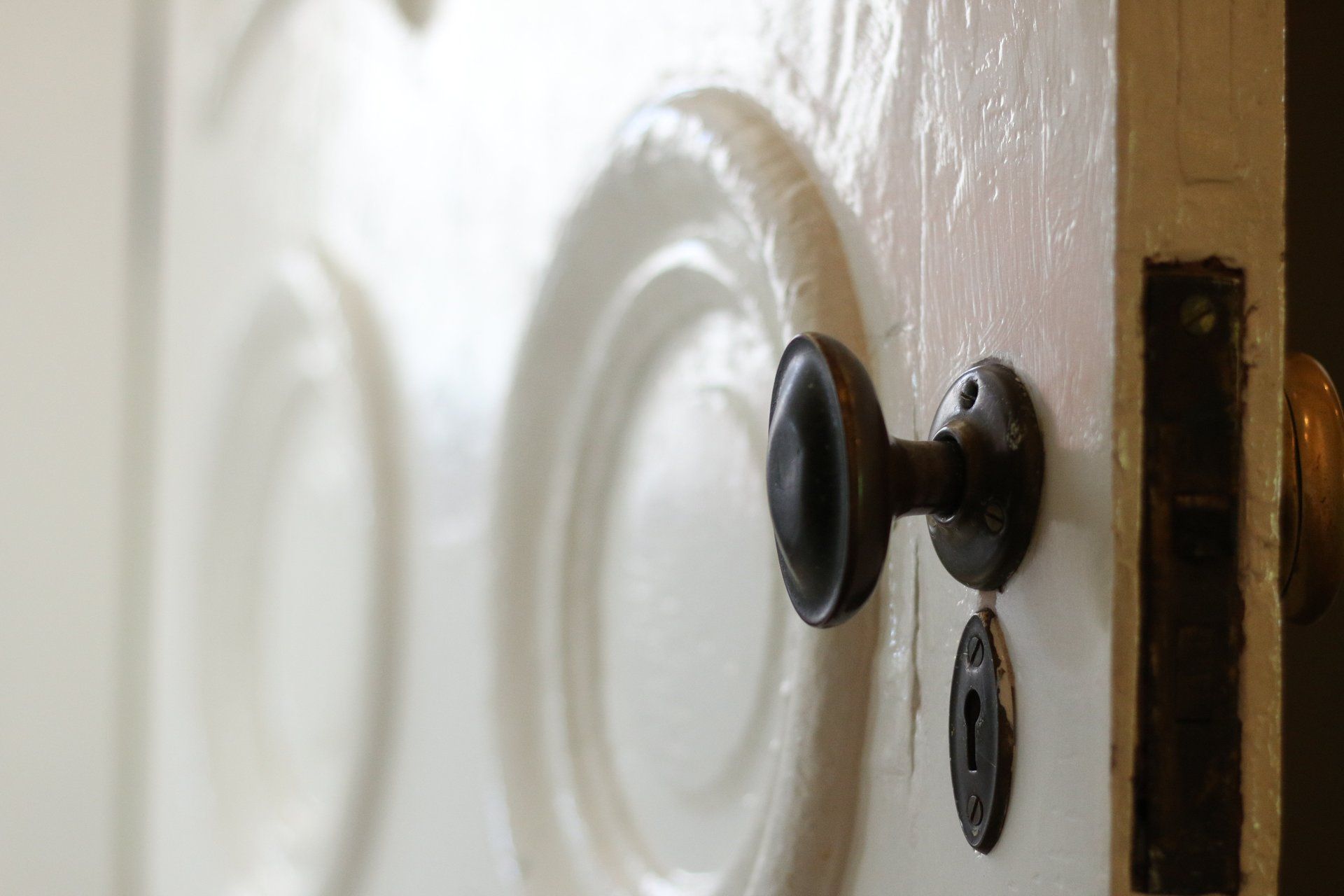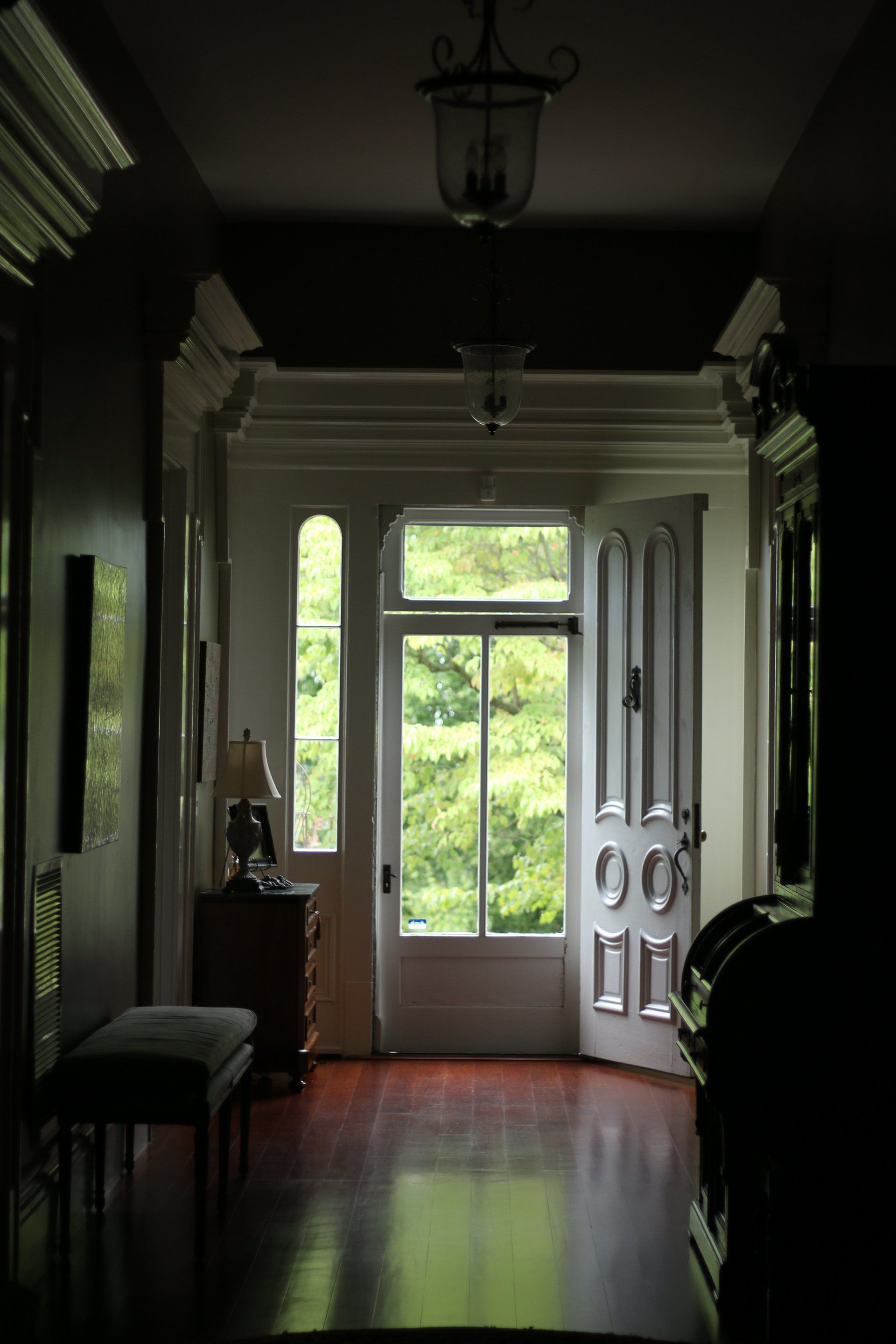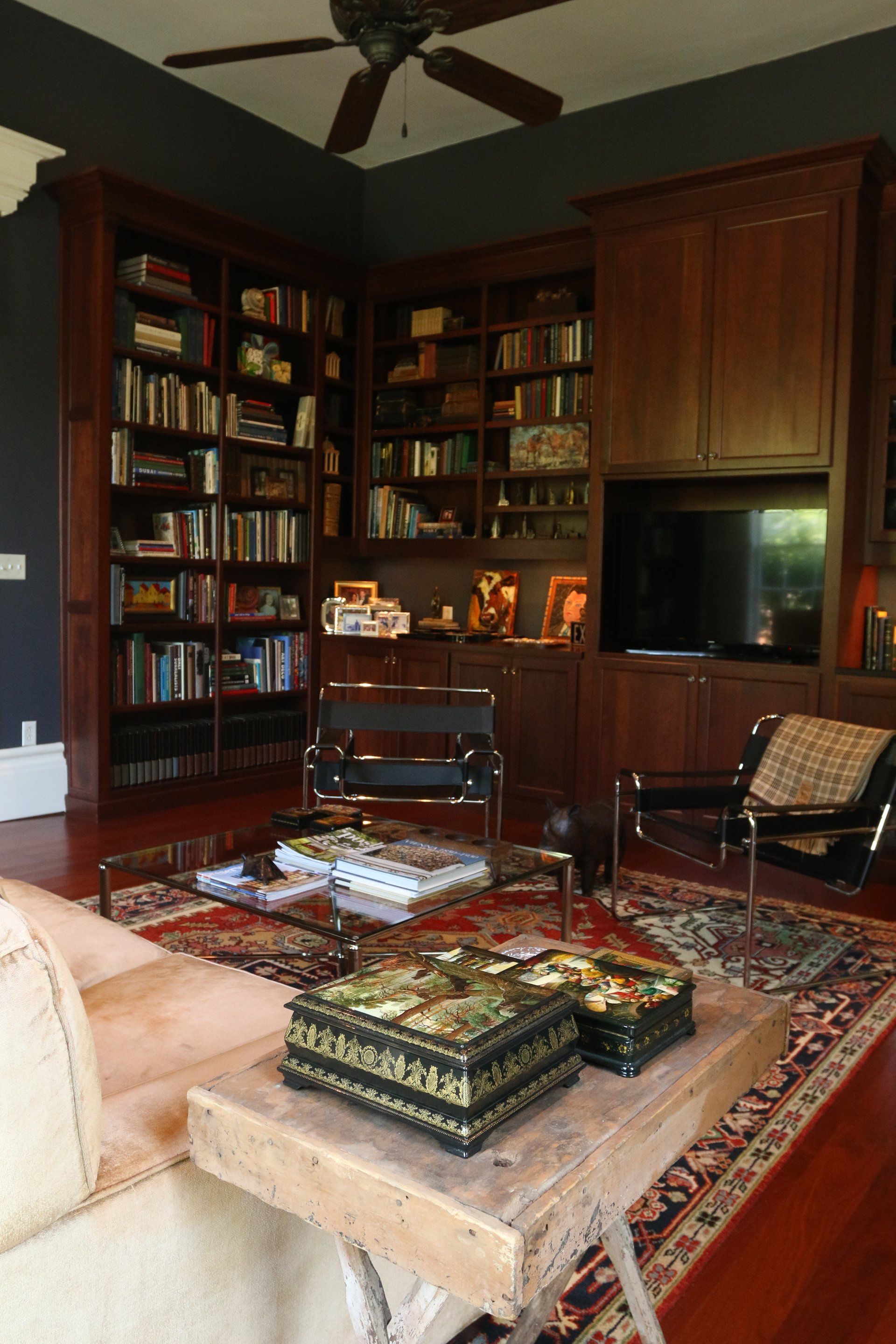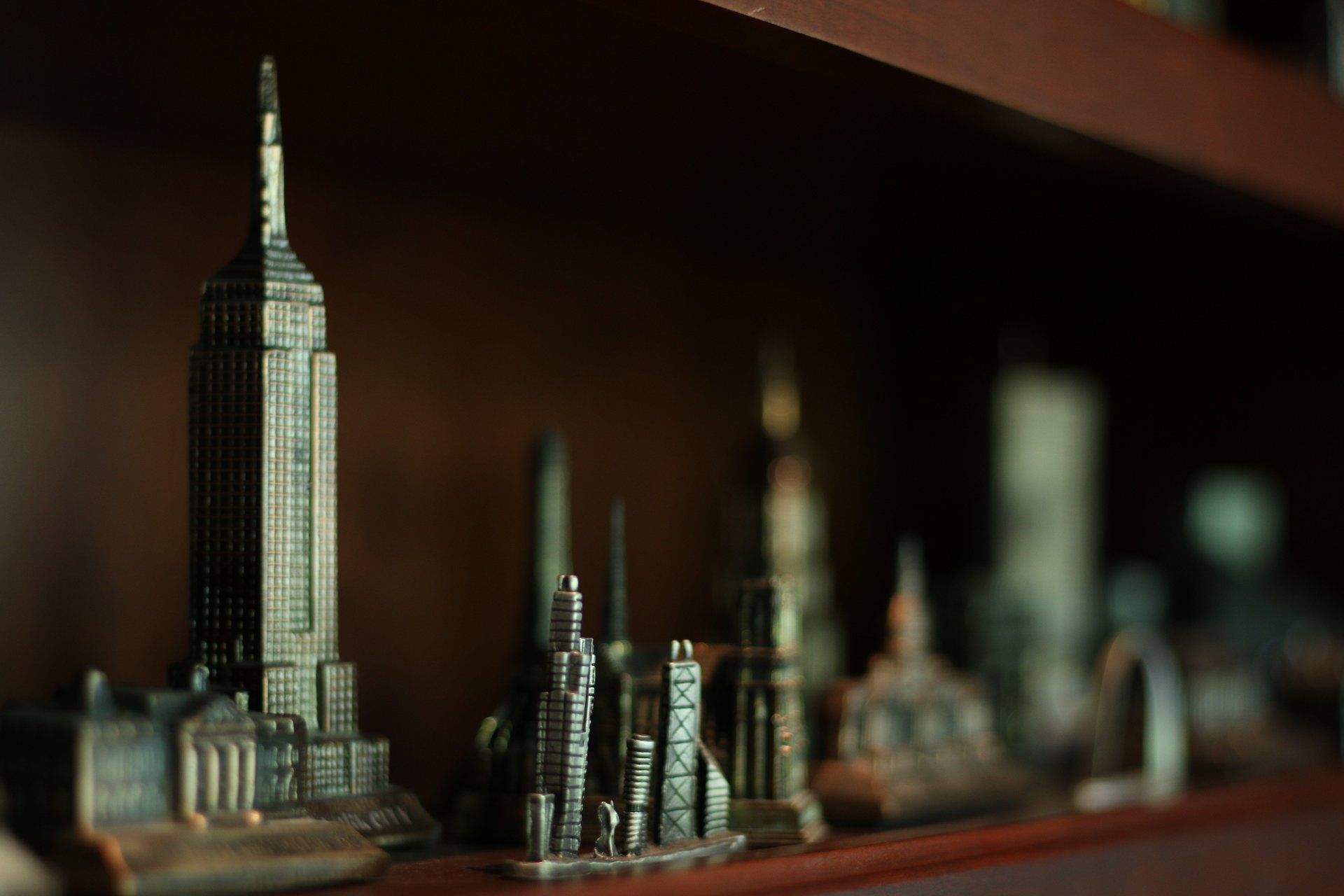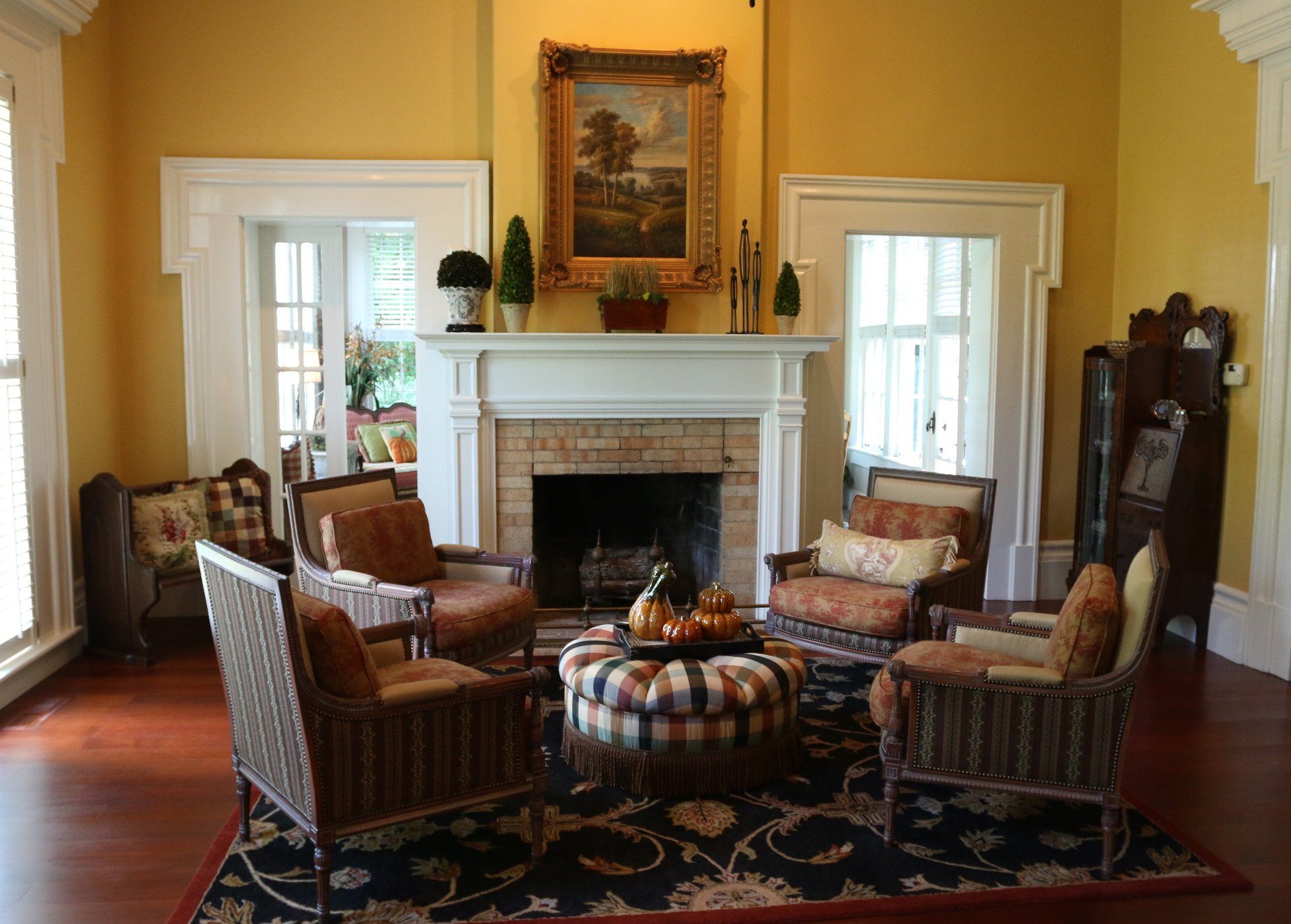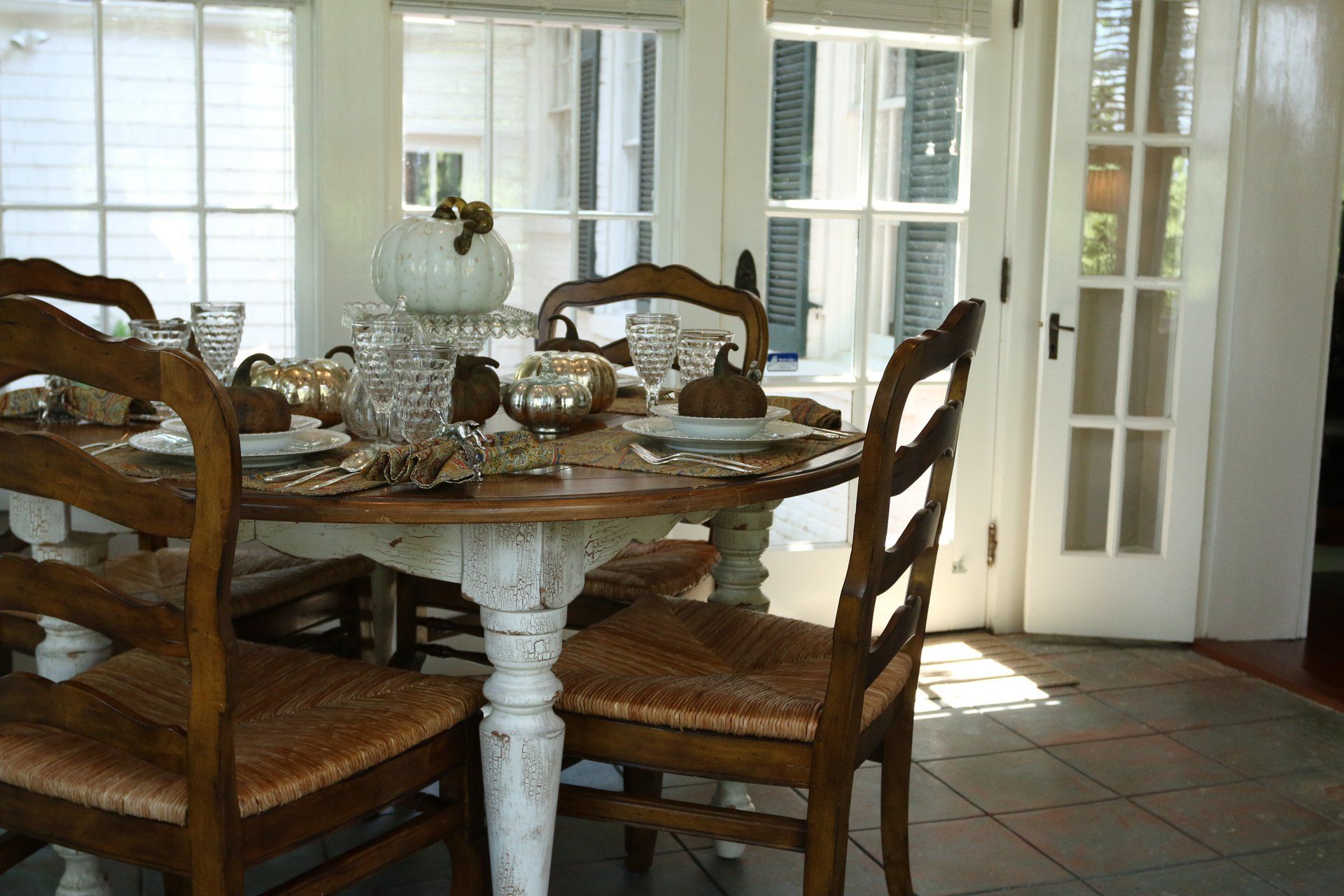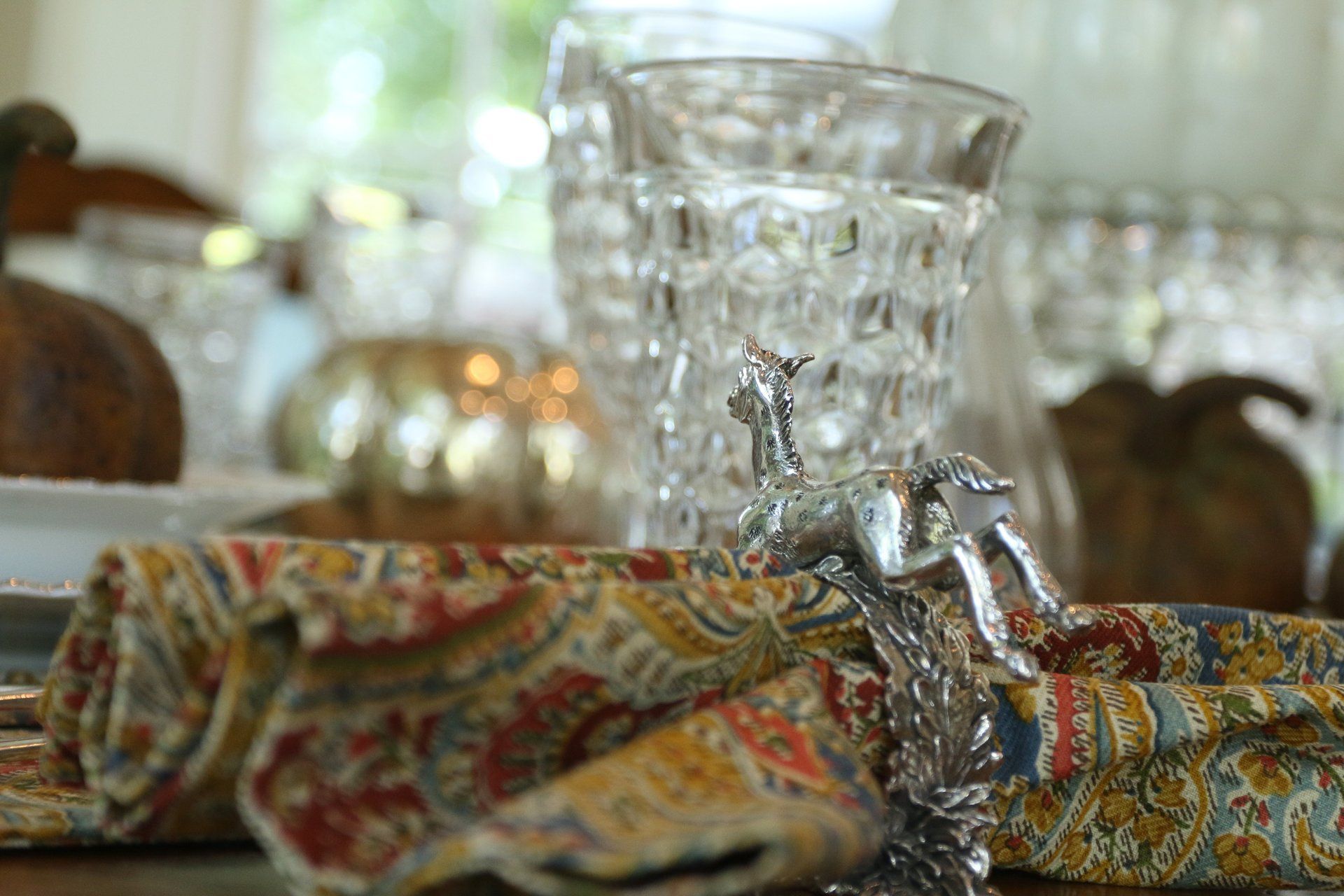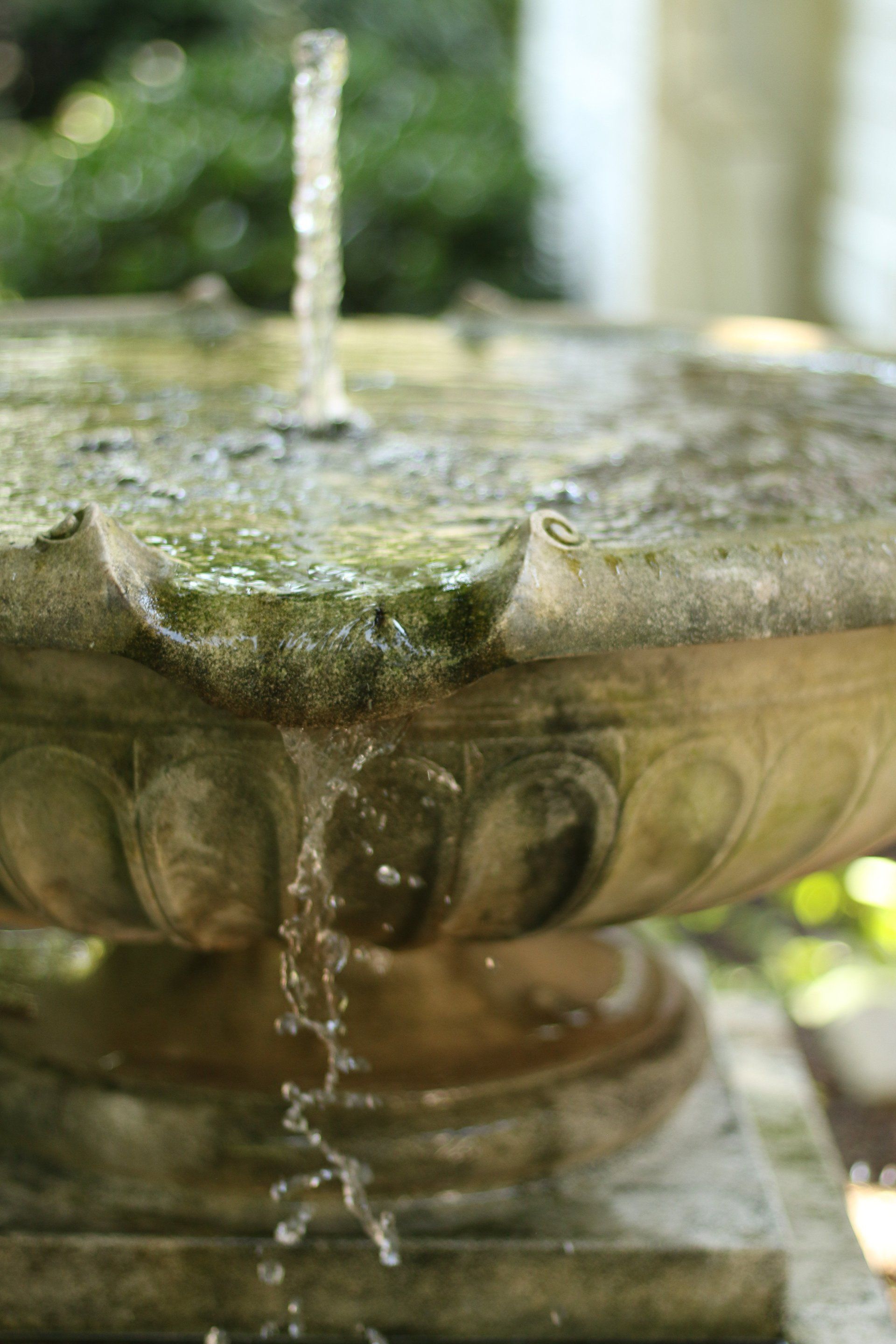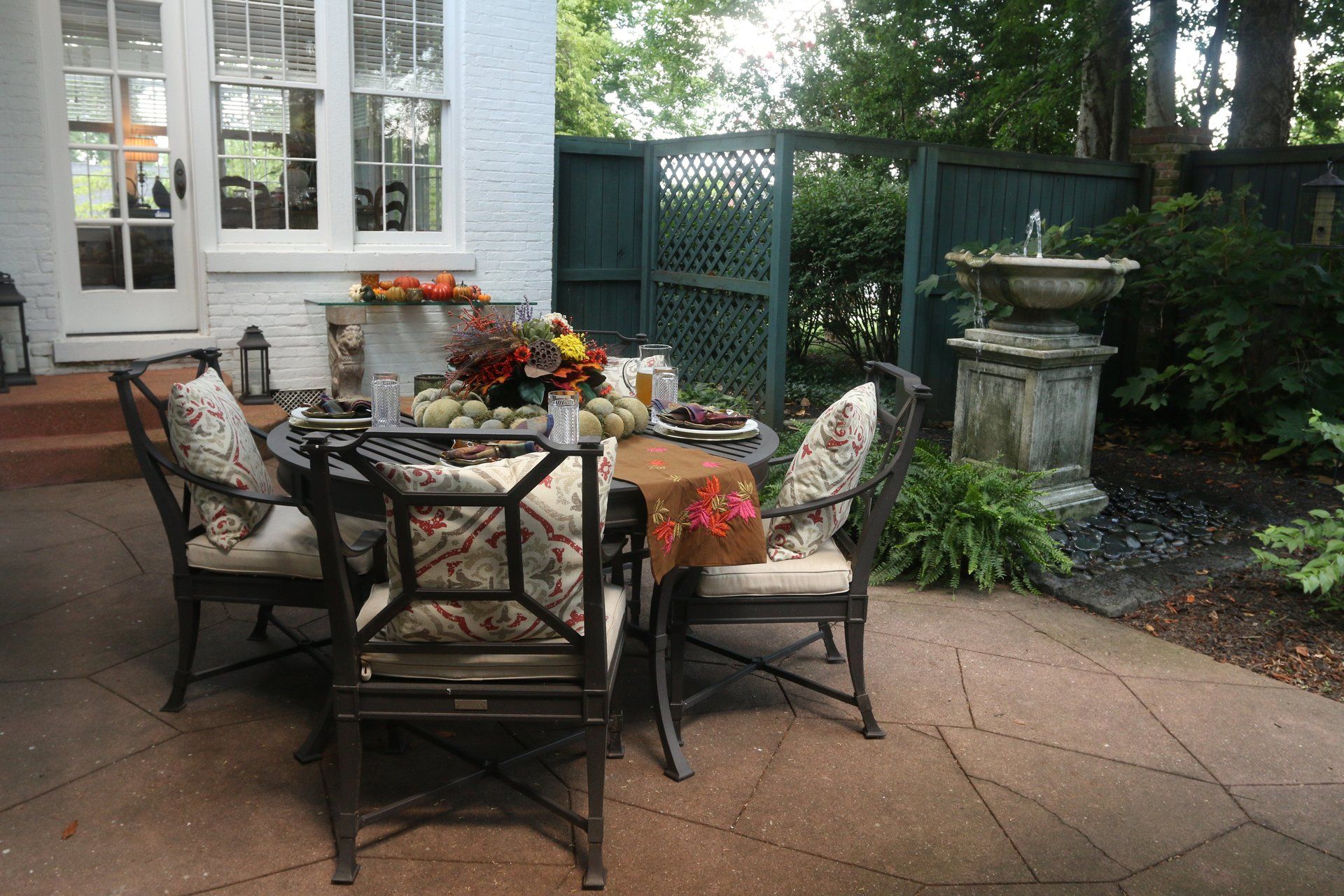
“LaBelle,” a notable West End Paducah home named after a
French phrase meaning “beautiful,” is very aptly named and has gone through quite the evolution in its nearly 160 year history.
STORY BY ELIZABETH NEELLEY
PHOTOGRAPHY BY THOMAS DEAN STEWART
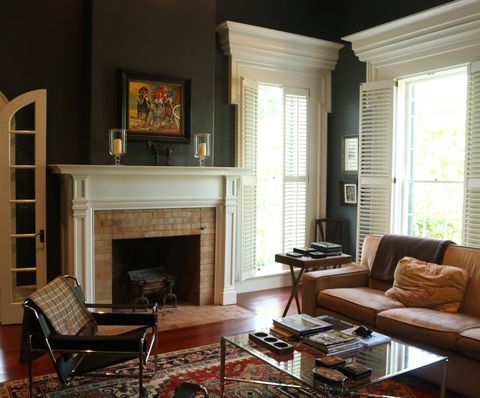
Later on in the early 1900s the city of Paducah purchased the house and the 100 acres it sat on and turned it in to Paducah’s first park: Wallace Park. The park had a dance pavilion, a lake and a baseball diamond. LaBelle became the home to the park’s caretaker, and later even became a place for theatrical troupes to change in and out of their costumes.
It was not until the late 1920s that the city sold the park to developers who then built the park into a residential neighborhood, now known as Paducah’s Wallace Park neighborhood. Around this time, the Nichol family bought the home and took the home through another renovation, adding two rooms off both sides of the main home, as well as a laundry room off the back and a two-story detached garage.
Today, visitors to the Davis home are welcomed through the front door in to a main, central hallway — a common feature of Greek Revival houses, and also one of Randy’s favorite areas in the home. The large front door, one of Stacey’s favorites – and also the door knocker – is the original door from when the house was built in the 1850s and still contains the inset shapes and designs often seen in Antebellum architecture.
Today, visitors to the Davis home are welcomed through the front door in to a main, central hallway — a common feature of Greek Revival houses, and also one of Randy’s favorite areas in the home. The large front door, one of Stacey’s favorites – and also the door knocker – is the original door from when the house was built in the 1850s and still contains the inset shapes and designs often seen in Antebellum architecture.
Today the walls and high ceilings of the central hallway serve as the perfect gallery and canvas for the Davises’ growing collection of original artwork. Also noticed in the main hallway are the gleaming white and tall moldings and pediments above each of the doorways, and the original back door of the main hallway, which were restored by the Coltharps and which Randy and Stacey love.
For current owners Randy and Stacey Davis, the historic home is the perfect combination of old and new. Built in 1858 by Capt. Phillip Wallace (and first featured in Posh in 2003 after an extensive renovation by then owners Rick and Ginny Coltharp), the home is one of the few remaining Antebellum era residences in Paducah.
The Davises had been looking for an older home in Paducah with a story to tell and some character, so when the Coltharps put the home up for sale in early 2016, they were excited to make it theirs. They love the mixture of the vintage details of the home mixed with its more modern touches.
“Being an architect, Randy has an eye for historic things,” she says, “and I love how easy it is to combine the old and new in decorating this house, and how fun it has been in making LaBelle our home by adding our own personal touches throughout.”
I was recently given the opportunity to take a tour of LaBelle by the Davises and was pleased to learn a little bit more about the history of this Greek Revival home.
The home’s first owners and builders, Phillip Wallace and his family, moved closer to town in the 1880s (at that time the neighborhood now known as Wallace Park was on the edge of Paducah), but not before expanding the home and adding two rooms to the rear of the house.
While extremely tempted to linger in the main hallway, I didn’t want to miss the rest of the home and was anxious to see the unique and classic touches the Davises have added to the other rooms of the house, including the front living room just to the left after entering the home.
It is the refurbished floor to ceiling windows and wavy restoration glass (brought back to their original length in the early 2000s) that first caught my attention. It is believed that these windows, and the front windows in what is now the Davises’ library, had been shortened during the late 1920s renovation, probably to match the building trends of the time as well as to equal the height of the other windows in the house and to make room for radiators.
However, the Davises’ own distinctive style, furniture and accessories certainly don’t take a back seat to the tall windows. In fact, Randy and Stacey’s great taste in antique furniture, as well as their eye for adding just the right details, only helps to accentuate the classic architectural features of the home.
Aided by friend and local designer Aprile Wisner, Randy and Stacey have effortlessly blended old, family pieces with newer pieces, fabrics and trimmings. They chose a buttery yellow wall color for the living room (PPG – Gold Buff), which combined with the light shining through the tall windows, evokes a bright, cheery feeling upon entering. Stacey particularly enjoys how the windows in the front room enable her to view the landscaping around her property.
A good example of this merging of the old with the new is seen in a room frequently used by the Davises – the sunporch just off to the side of the living room. It is here that Randy, Stacey and their son Joshua sit down often for everyday meals.
Set perfectly on the top of their sunroom dining table with curved ladder back chairs are Randy’s mother’s china and his grandmother’s Fostoria glasses and cake stand. Stacey’s grandmother’s silverware helps to complete the table setting. Mixed with these keepsakes are newer linens and pewter napkin rings that Randy and Stacey collected when they got married.
This isn’t the first older home in which the Davises have lived. For years they resided in Randy’s family’s farmhouse in Ballard County, built by his great-grandparents. It is there where they found several stoneware crocks and a double-door cabinet that they now display in the LaBelle sunroom. They have balanced these older finds with a caned seat settee and a farmhouse style dish rack hanging on the wall opposite the settee.
Stepping just outside the sunroom is a refurbished and quaint outdoor courtyard. While a bit difficult to enjoy during the steamy humid weather west Kentucky is known to have in the summer, this area of the home becomes a place the Davises look forward to using as summer days turn into the cooler days of fall.
In the courtyard is a comfortable patio table and seating, as well a stone bird-bath fountain. Its weathered patina complements the style of the home. Another room where the Davises have applied their own thumbprint is the formal dining room. While the room does have original wall sconces from the 1930s renovation, the walls were more recently adorned with
Renaissance themed murals in shades of beige, bronze and brown (Sherwin Williams — Universal Khaki as the base coat; with Quiver Tan; Superior Bronze and Protégé Bronze as accent colors). Randy studied abroad in Venice, Italy for a semester in college, and Stacey counts France as one of the great places she’s traveled. It is these travel experiences that helped influence the wall’s design.
The Davises have another collection of treasured items displayed in their kitchen: Randy’s grandmother’s salt and pepper shakers, as well as her Roseville pottery. The collection is housed in a glass front cabinet, one of many cabinets that were added by the Coltharps during the home’s renovation 15 years ago. The 1930s cabinets weren’t thrown away but repurposed as storage and linen cabinets for the family’s laundry room and master bath.
Randy and Stacey, just like the small details seen in his grandmother’s salt and pepper shakers, love the details of their historic home. From the home’s restored woodwork, to the French style pocket doors between the front living room and the dining room, LaBelle is full of details old and new.
A room that shows off this mix of antique and contemporary quite well is the library off the opposite side of the central hallway. The choice of a dark gray-blue paint in this room (Pittsburgh Paints – Gray Flannel), matches well with the dark wooden built-ins. To add more color and contrast to the home, it’s this paint color and others in the home, that the Davises acknowledge is one of the ways they feel they’ve been able to add their thumbprint to the house. Also seen in the room is a library sofa with more modern lines that is flanked with two leather and chrome arm chairs, giving the room a slight mid-century modern flair.
The Davises have filled the library built-ins with souvenirs picked up from their travels, including a collection of lacquered boxes from Russia and small metal figurines of landmarks from places they have traveled, including miniature skyscrapers and other notable buildings. Randy also enjoys his collection of Irvin Cobb memorabilia, collected throughout the years here in Paducah.
Additionally Randy and Stacey have various masks, carvings and other pieces from Africa, where Stacey travels for her job with a ministry that helps children in need around the world, for which she focuses on serving in Tanzania, East Africa. These items are found throughout the house, including in their library and kitchen.
For Randy and Stacey both, living in LaBelle has been a blessing. “I feel honored to be able to continue the preservation of LaBelle as an important piece of Paducah’s history for future generations,” says Randy. Stacey agrees and adds, “It is amazing to think that the man who built the original part of this home fought in the Civil War and that this part of Paducah history is still here to be enjoyed in this gorgeous home.” Indeed, after all these years later LaBelle still shines.

